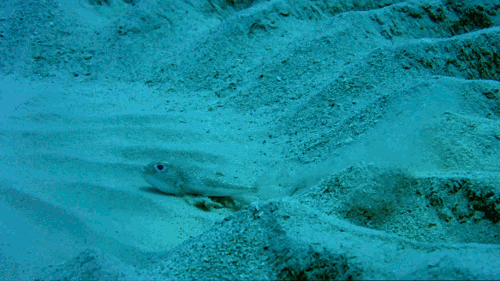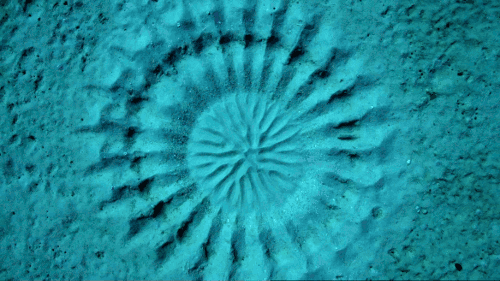Hannahhaifisch - HH




More Posts from Hannahhaifisch and Others

Our Galaxy’s Magnetic Field from Planck https://go.nasa.gov/2quwDLs



A small Japanese puffer fish is the creator of one of the most spectacular animal-made structures. To impress the female puffer fish, the male labors 24 hours a day for a week to create a pattern in the sand. If the female finds his work satisfactory, she allows him to fertilize her eggs. She then lays them in the middle of the circle, leaving the male to guard the eggs alone.
Life Story (2014)



Tetrahedrite with Siderite
Locality: Saint-Pierre-de-Mesage, Vizille, Rhone-Alpes, France

Exchanges of identity in deep space
By reproducing the complexity of the cosmos through unprecedented simulations, a new study highlights the importance of the possible behaviour of very high energy photons
Like in a nail-biting thriller full of escapes and subterfuge, photons from far-off light sources, such as blazars, could go up against a continuous exchange of identity in their journey through the Universe. This is an operation that would allow these very tiny particles of light to escape an enemy which, if encountered, would annihilate them. This is the phenomenon studied by a group of researchers from the University of Salento, Bari, the National Institute for Nuclear Physics (INFN), the National Institute for Astrophysics (INAF) and SISSA thanks to brand new simulation models that reproduce the complexity of the cosmos as never before. Normally, very high energy photons (gamma rays) should “collide” with the background light emitted by galaxies transformed into pairs of matter and antimatter particles, as envisaged by the Theory of Relativity. For this reason, the sources of very high energy gamma rays should appear significantly less bright than what is observed in many cases.
A possible explanation for this surprising anomaly is that light photons are transformed into hypothetical weakly-interacting particles, “axions” which, in turn, would change into photons, all due to the interaction with magnetic fields. With these metamorphoses, a part of the photons would escape interaction with the intergalactic background light that would make them disappear. The importance of this process is emphasised by the study published on Physical Review Letters, which re-created an extremely refined model of the Cosmic Web, a network of filaments composed of gas and dark matter present throughout the Universe and of its magnetic fields. The aforementioned effects are now awaiting comparison with those obtained experimentally through Cherenkov Telescope Array new generation telescopes.
In this research, through complex and unprecedented computer simulations made at the CSCS Supercomputing Centre in Lugano, scholars have reproduced the so-called Cosmic Web and the magnetic fields associated with this to investigate the possibility, advanced from previous theories, that photons from a light source are transformed into axions, hypothetical elementary particles, on interacting with an extragalactic magnetic field. Axions could then be retransformed into photons by interacting with other magnetic fields. Researchers Daniele Montanino, Franco Vazza, Alessandro Mirizzi and Matteo Viel explain: “Photons from luminous bodies disappear when they encounter extragalactic background light (EBL). But if on their journey they head into these transformations as envisaged by these theories, it would explain why, in addition to giving very important information on processes that occur in the universe, distant celestial bodies are brighter than expected from an observation on Earth. These changes would, in fact, enable a greater number of photons to reach the Earth”.
In the simulations made by scientists, thanks to the wealth of magnetic fields present in the Cosmic Web’s filaments recreated with the simulations, the conversion phenomenon would seem much more relevant than predicted by previous models: “Our simulations reproduce a very realistic picture of the cosmos’ structure. From what we have observed, the distribution of the Cosmic Web envisaged by us would markedly increase the probability of these transformations”. The next step in the research? To compare simulation results with the experimental data obtained through the use of the Cherenkov Telescope Array Observatories detectors, the new-generation astronomical observatories, one of which is positioned in the Canary Islands and the other in Chile, that will study the Universe through very high energy gamma rays.
IMAGE….Through complex computer simulations, researchers have reproduced the so-colled Comsc Web and its magnetic fields Credit Vazza F., Bruggen M. Gheller, C., Wang P.


cube







Where Does The Mass Of A Proton Come From?
“It is very accurately known how large the average gluon density is inside a proton. What is not known is exactly where the gluons are located inside the proton. We model the gluons as located around the three valance quarks. Then we control the amount of fluctuations represented in the model by setting how large the gluon clouds are, and how far apart they are from each other.”
If you divide the matter we know into progressively smaller and smaller components, you’d find that atomic nuclei, made of protons and neutrons, compose the overwhelming majority of the mass we understand. But if you look inside each nucleon, you find that its constituents – quarks and gluons – account for less than 0.2% of their total mass. The remaining 99.8% must come from the unique binding energy due to the strong force. To understand how that mass comes about, we need to better understand not only the average distribution of sea quarks and gluons within the proton and heavy ions, but to reveal the fluctuations in the fields and particle locations within. The key to that is deep inelastic scattering, and we’re well on our way to uncovering the cosmic truths behind the origin of matter’s mass.

Hexagons and rhombis spreading out
-
 junegloomrosedoom reblogged this · 7 months ago
junegloomrosedoom reblogged this · 7 months ago -
 bookshelfbrunette reblogged this · 7 months ago
bookshelfbrunette reblogged this · 7 months ago -
 bottled---inspiration reblogged this · 9 months ago
bottled---inspiration reblogged this · 9 months ago -
 chryso-poeia liked this · 11 months ago
chryso-poeia liked this · 11 months ago -
 rlbmut-06 reblogged this · 1 year ago
rlbmut-06 reblogged this · 1 year ago -
 dagozione liked this · 1 year ago
dagozione liked this · 1 year ago -
 nubianiriva liked this · 1 year ago
nubianiriva liked this · 1 year ago -
 babys-pink-room reblogged this · 1 year ago
babys-pink-room reblogged this · 1 year ago -
 realnerdyboy reblogged this · 1 year ago
realnerdyboy reblogged this · 1 year ago -
 realnerdyboy liked this · 1 year ago
realnerdyboy liked this · 1 year ago -
 ggbrown liked this · 1 year ago
ggbrown liked this · 1 year ago -
 gatorman2017 liked this · 1 year ago
gatorman2017 liked this · 1 year ago -
 sombra721 reblogged this · 1 year ago
sombra721 reblogged this · 1 year ago -
 sombra721 liked this · 1 year ago
sombra721 liked this · 1 year ago -
 cranberry-veins-chocolate-heart reblogged this · 1 year ago
cranberry-veins-chocolate-heart reblogged this · 1 year ago -
 cranberry-veins-chocolate-heart liked this · 1 year ago
cranberry-veins-chocolate-heart liked this · 1 year ago -
 versuri-official reblogged this · 1 year ago
versuri-official reblogged this · 1 year ago -
 midwesternwerewolf reblogged this · 1 year ago
midwesternwerewolf reblogged this · 1 year ago -
 sweetdreamer9 reblogged this · 1 year ago
sweetdreamer9 reblogged this · 1 year ago -
 sweetdreamer9 liked this · 1 year ago
sweetdreamer9 liked this · 1 year ago -
 wieruszow liked this · 1 year ago
wieruszow liked this · 1 year ago -
 maxcullen reblogged this · 1 year ago
maxcullen reblogged this · 1 year ago -
 maxcullen liked this · 1 year ago
maxcullen liked this · 1 year ago -
 deweydell25 reblogged this · 1 year ago
deweydell25 reblogged this · 1 year ago -
 deweydell25 liked this · 1 year ago
deweydell25 liked this · 1 year ago -
 potentlove reblogged this · 1 year ago
potentlove reblogged this · 1 year ago -
 eclipsevalthorn reblogged this · 2 years ago
eclipsevalthorn reblogged this · 2 years ago -
 exiled-in-happiness reblogged this · 2 years ago
exiled-in-happiness reblogged this · 2 years ago -
 whatevs22 liked this · 2 years ago
whatevs22 liked this · 2 years ago -
 missari liked this · 2 years ago
missari liked this · 2 years ago -
 dopescissorscashwagon liked this · 2 years ago
dopescissorscashwagon liked this · 2 years ago -
 violetvapours reblogged this · 2 years ago
violetvapours reblogged this · 2 years ago -
 your-existence-disgusts-me reblogged this · 2 years ago
your-existence-disgusts-me reblogged this · 2 years ago -
 archetypewriter reblogged this · 2 years ago
archetypewriter reblogged this · 2 years ago -
 mechatrnsatlanticfoe liked this · 2 years ago
mechatrnsatlanticfoe liked this · 2 years ago -
 karelmi reblogged this · 2 years ago
karelmi reblogged this · 2 years ago -
 darkphoenixmoonlight reblogged this · 2 years ago
darkphoenixmoonlight reblogged this · 2 years ago